Search
Search Results
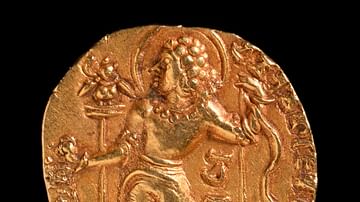
Image
Gold Coin of Chandragupta II
Gold coin issued by Chandragupta II (circa 380 – 414 CE).
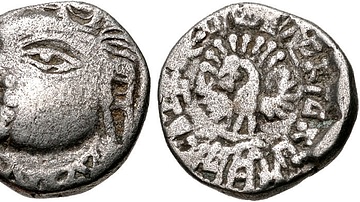
Image
Coin of King Ishanavarman
This coin was issued by the Maukhari king Ishanavarman (c. sixth century CE). It shows a diademed bust on one side, with a crescent on the diadem, probably representing the king himself. The other side has a peacock with its head turned left...
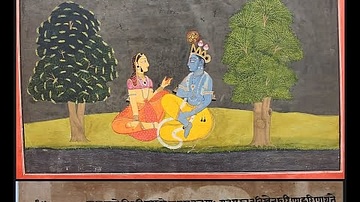
Video
The Lahore Museum: A Crucible of Research in Pahari Painting by Mr F S Aijazuddin
Pahari Painting | Lahore Museum | Art History His talk today will be on the Pahari paintings collection in the Lahore Museum and their significance in the art-historical research into the various schools.Before 1947, the Lahore Museum...
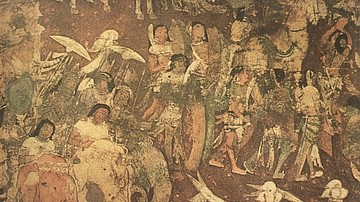
Image
Gupta/Vakataka Period War Elephants
A section of the mural at Ajanta in Cave No. 17. depicts the 'coming of Sinhala'. The prince (Prince Vijaya) is seen in both of groups of elephants and riders. This mural also depicts the soldiers of the Gupta/Vakataka period (4th to 6th...
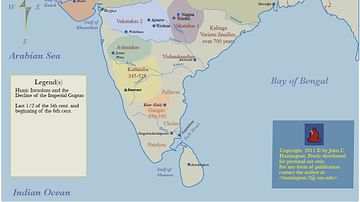
Definition
White Huns (Hephthalites)
The White Huns were a race of largely nomadic peoples who were a part of the Hunnic tribes of Central Asia. They ruled over an expansive area stretching from the Central Asian lands all the way to the Western Indian Subcontinent. Although...
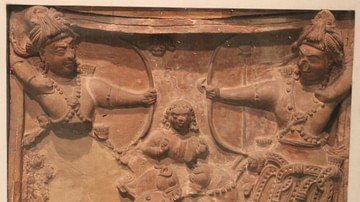
Definition
Ancient Indian Warfare
War was the chief means by which territory was annexed or rulers defeated in ancient India, which was divided into multiple kingdoms, republics and empires. Often one empire predominated or different empires co-existed. The Vedic literature...
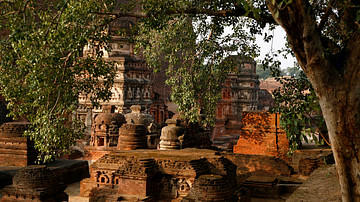
Definition
Harsha
Emperor Harshavardhana, better known as Harsha, lived from 590 to 647 CE and was the last ruler of the Vardhana Empire, the last great empire in ancient India before the Islamic Invasion. He ruled from 606 CE to 647 CE. After Harshavardhana's...
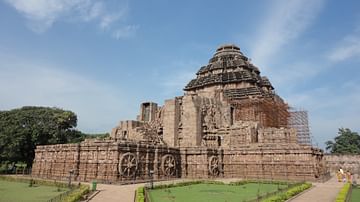
Definition
Konarak Sun Temple
The Konark or Konarak Sun temple is dedicated to the Hindu sun god Surya, and, conceived as a giant stone chariot with 12 wheels, it is the most famous of the few sun temples built in India. It is located about 35 km northeast of the city...
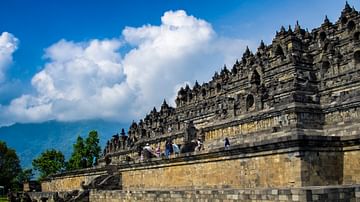
Definition
Borobudur
The Temple of Borobudur or sometimes "Barabudur" is a Mahayana Buddhist temple located close to Muntilan on the island of Java in Indonesia. Built during the rule of the Sailendra Dynasty (c. 650-1025 CE), Borobudur remains the world's largest...
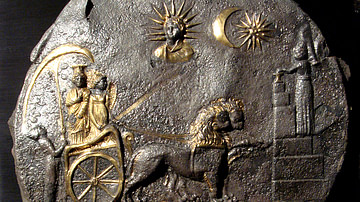
Definition
Ancient Afghanistan
The ancient history of Afghanistan, a landlocked country in Central Asia, is full of fascinating cultures, from early nomadic tribes to the realms of Achaemenid Persia, the Seleucids, the Mauryans, the Parthians, and Sasanians, as well as...